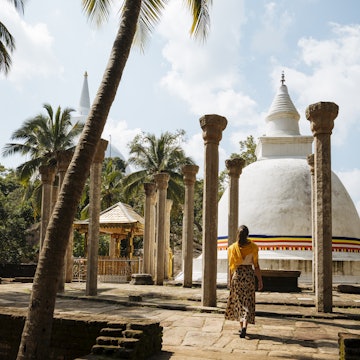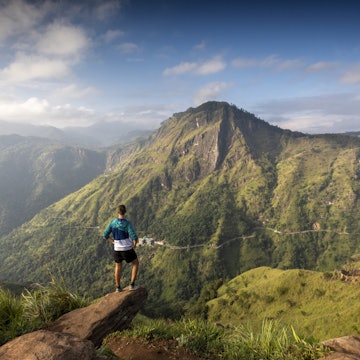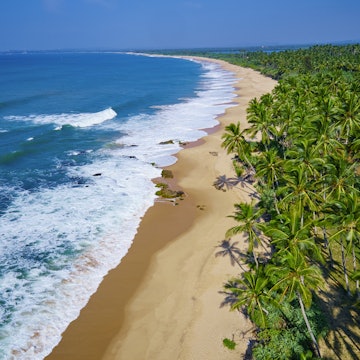
How to get around in Sri Lanka: trains, buses, tuk tuks and cars

Aug 25, 2025 • 6 min read
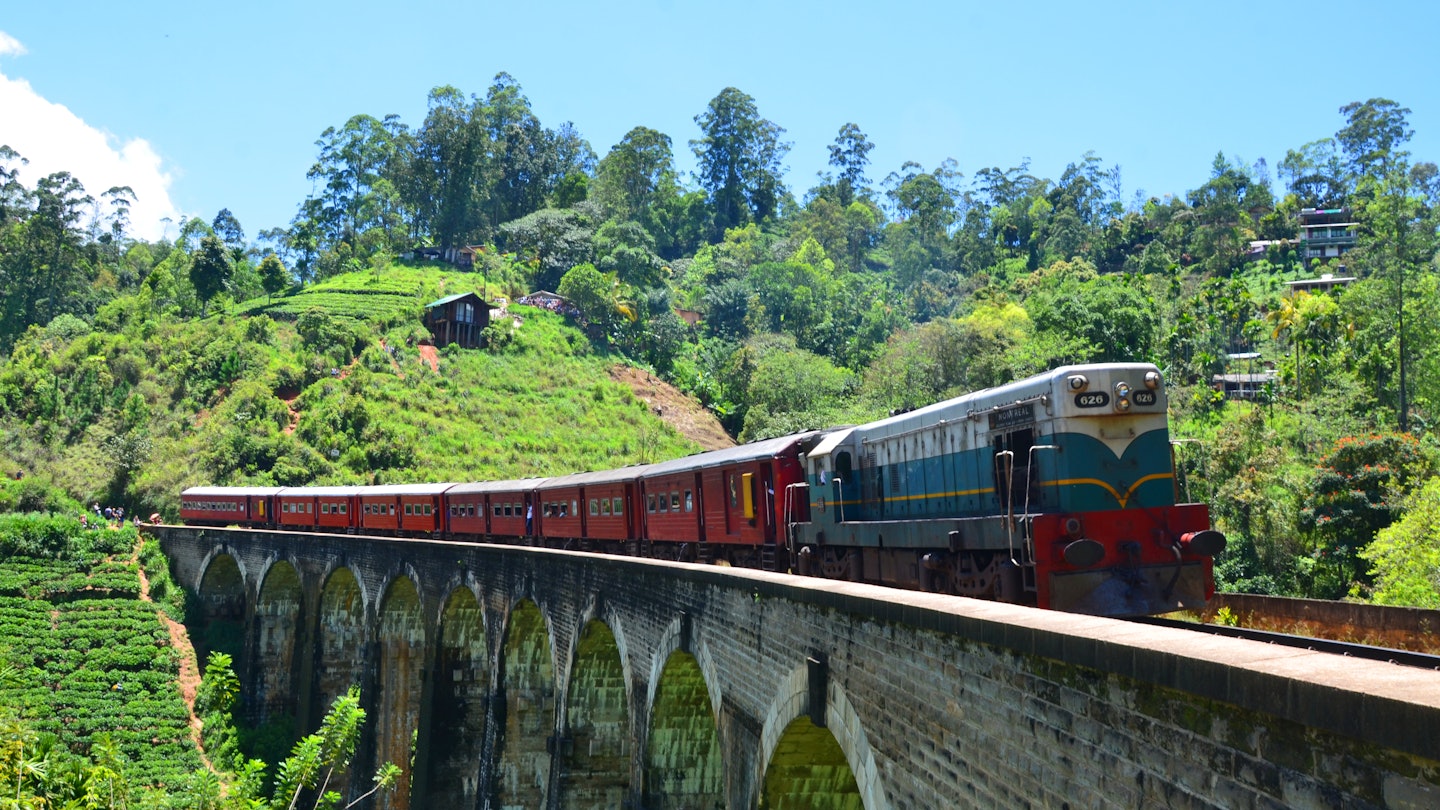
The train trip from Ella to Kandy in Sri Lanka, is one of the most scenic. peacefoo/Shutterstock
Sri Lanka's landscape is impressively varied. Grand national parks are home to safari adventures, otherworldly coastlines circle the perimeter, and hilly tea country is at its heart.
With such versatility, there are many different transport options. It’s nearly impossible to define a singular "best" way to move around Sri Lanka. Rather, it depends on where you are, where you're headed and what you enjoy.
Domestic flight options are quite limited, which means the main contenders for transportation are trains, buses, tuk tuks and private cars. We break down what you need to know about each.

Take a scenic train journey between major towns and cities
Sri Lanka's major cities and towns are extremely well-connected by train. Overall, it’s an easy, convenient and sustainable way to travel. Of course, sometimes the trains can be delayed – but isn’t that a risk almost everywhere? We suggest not giving in to cautionary calls on travel forums to avoid train travel due to delays, as you’ll absolutely be missing out. Trains offer some of the most efficient, relaxing and spectacular ways to get to a destination in Sri Lanka, plus they avoid pesky city traffic.
As the financial capital, Colombo is a transport hub from which trains spring off across the whole country. They travel east to the city of Kandy and down into Nuwara Eliya – a town in tea country. Northbound trains reach the cities of Anuradhapura and Jaffna.
Some train trips are so scenic, they’re an activity in themselves. The six-hour ride from Kandy to Ella, which weaves through seemingly endless tea fields, is right up there among the world’s best train routes. A recently renovated route from Colombo to the historical city of Galle conversely runs on the edge of the west coast, offering mesmeric views of the Indian Ocean.
There are three classes in Sri Lanka’s train system. First-class tickets might offer beds; otherwise, expect roomy seats with large windows that are perfect for gazing out of. You can reserve these seats, but don’t leave booking too late as they’re likely to sell out.
If you struggle with the heat, it’s worth knowing that first-class cabins are air-conditioned and second-class cabins usually have fans. First- and second-class tickets are generally bookable from train station counters up to 30 days in advance. If you need a little more assistance, you can purchase these through a local travel agent. Third-class seats are not bookable, but first come, first serve and those who do not get a seat will need to stand.
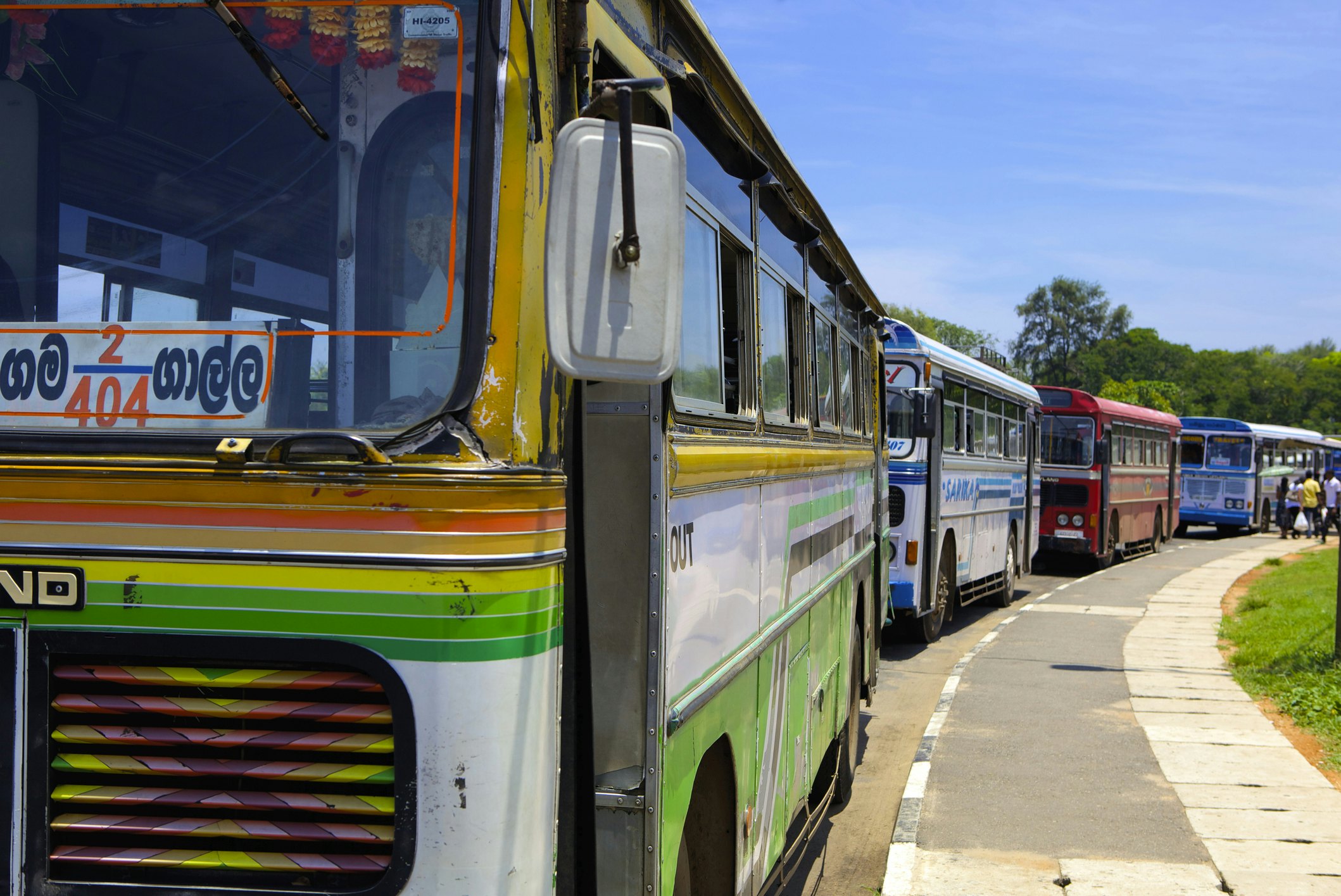
Where trains aren’t an option, look towards the buses
In Sri Lanka, buses fill the gaps train infrastructure can’t, connecting much of the country. There are both public and private buses to choose from.
If you have time to spare, are on a budget and do not experience motion sickness, public buses – that includes government-run Sri Lanka Transport Board (SLTB) and Central Transport Board (CTB) buses – are a good option. They are the most affordable transport option in Sri Lanka and, as such, there are no frills. They can be a wild ride – bumpy, often playing blaring music, with no air-con and the windows open.
If you experience motion sickness and are willing to pay a little more, opt for a private bus. They do vary in condition and age, but they’re generally comfortable coaches or minibuses with air conditioning. Private buses provide more direct routes to attractions that are a little further away.
Tip for buying bus tickets: Knowing where to find your bus and buy your tickets can sometimes be a scavenger hunt. At bus stations, there will most likely be an information office or desk where staff can guide you to the right departure point. If not, ask a local for help or check the destination signs on the fronts of the buses.
For both public and private buses, you usually pay the fare on board, either to the driver or the conductor. Some smaller private bus companies may sell tickets just outside the bus.

Take a tuk tuk for short journeys
Tuk tuks – motorized rickshaws – are a quintessential mode of transport, perfect for short distances. From major cities to small towns, you'll find tuk tuks all over Sri Lanka. Discuss and agree the fare with the driver before you start your journey, then sit back to enjoy the open-air energy of your surroundings – especially the sounds and smells – unrivaled by any other form of transport.
Consider hiring a private car with a driver
The most convenient way of getting around Sri Lanka is by hiring a private driver. It allows you to have more control over designing a customized road trip itinerary.
The bonus with private drivers is the local knowledge they hold. You’ll be able to learn about Sri Lanka in a way you can’t necessarily on a larger tour. Some drivers will also recommend things to see, eat and do and perhaps take you to more hidden or local spots.
If you’re looking to hire a driver in advance, contact your accommodation for their local recommendations. Travel agencies will also be able to connect you with someone to suit your needs.

Self-driving is not recommended
You can hire a car or a motorbike in Sri Lanka if you have an International Driving Permit, however it’s not a common choice for travelers. High traffic in cities and poor road quality in regional and rural areas mean it is safer for travelers to rely on public transport and local drivers, unless they are extremely confident and capable. If you are considering driving or hiring a motorbike, we’d recommend you do this in less traffic-dense areas.
Weather conditions can slow road travel
One thing to be mindful of is Sri Lanka’s two monsoon seasons. The northeast monsoon season is from September to March, while the southwest is from May to August. Heavy rain can slow down all kinds of travel, but especially road travel – posing a particular challenge to dirt roads, which might become full of puddles, washed out and unsafe to drive on. You’re better off relying on the trains during the monsoon seasons. The only trade-off is that some train windows are stubborn to close, so there’s a chance you might get a little wet.
It's also well worth researching whether your visit coincides with any festivals or days of significance. Certain places can see a major influx of visitors, increasing traffic on the roads and causing public transportation tickets to be in much more demand.
Accessible transport in Sri Lanka
Sri Lanka continues to improve its accessibility, but the number of under-maintained roads and sidewalks without ramps pose challenges to travelers with reduced mobility. For wheelchair users, private cars and vans are the most suitable form of transport, given buses do not have wheelchair access – and only a very limited number of trains do. Check out local tour operators for on-the-ground advice about accessible transport options.







